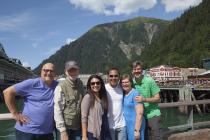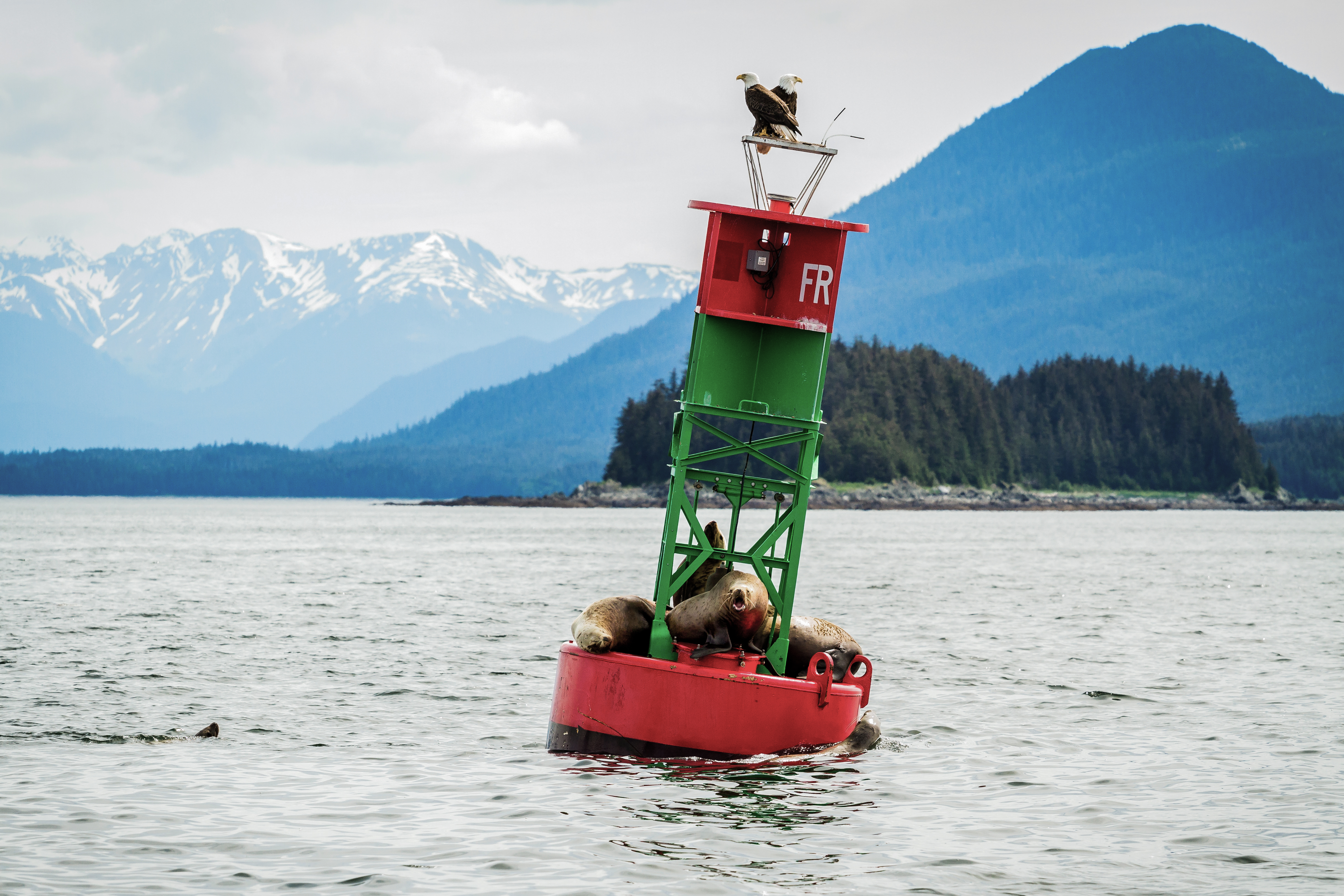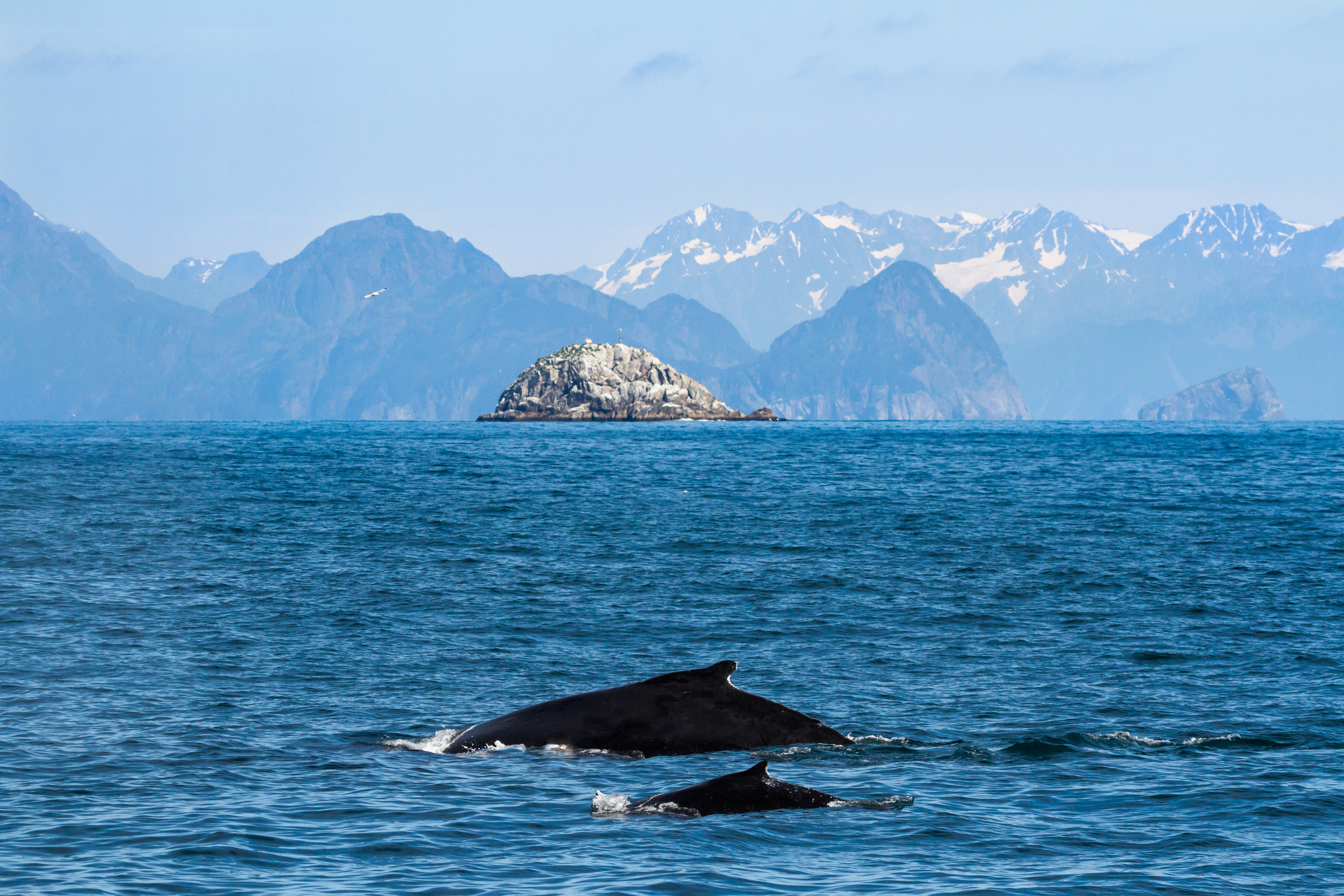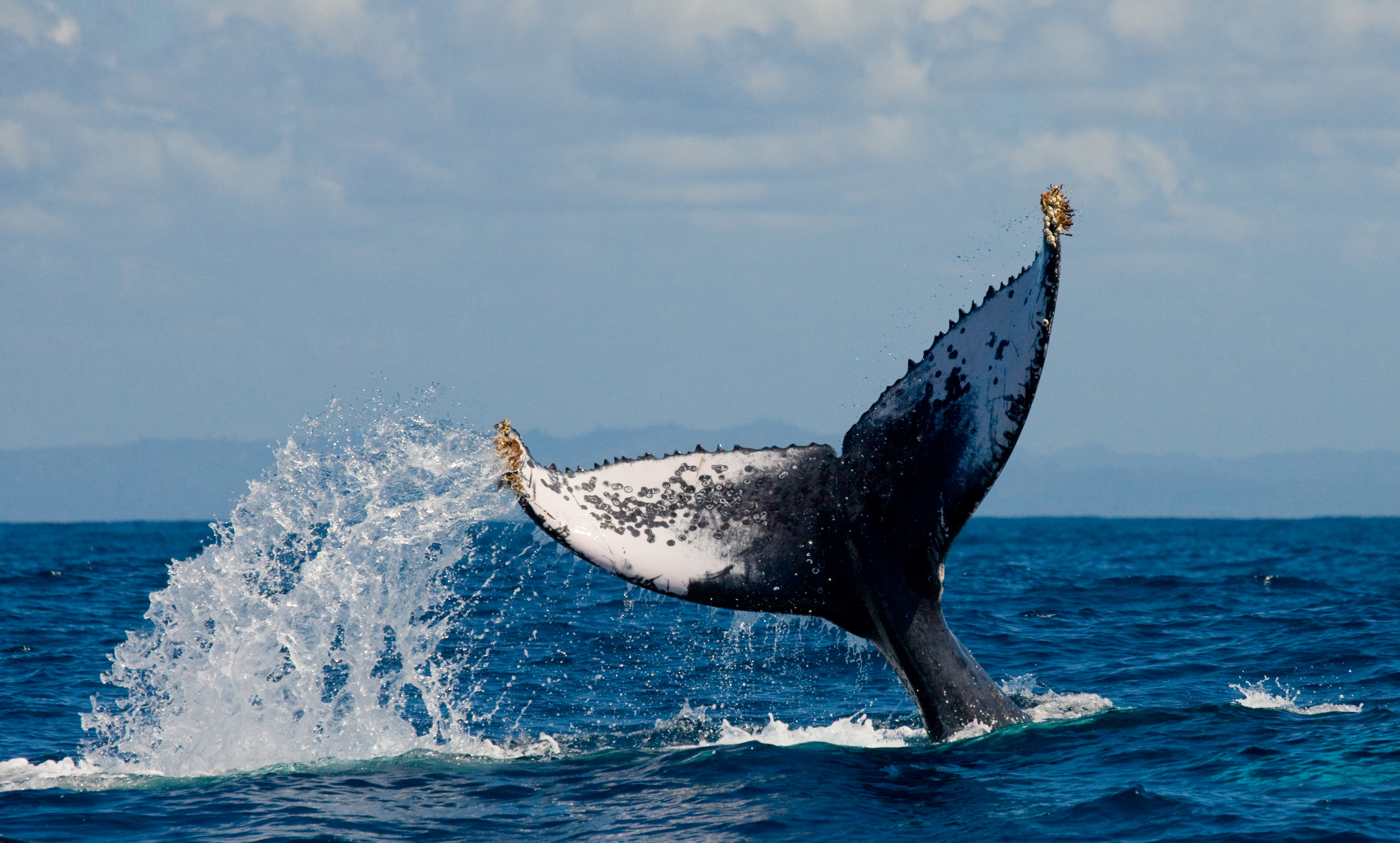Get to Know the Whales of Alaska...By Name
“Does anybody see one?” buzzed a woman behind me. As the rest of the passengers filed onto the deck, the murmured excitement mounted.
We had just reached open water after passing a gathering of puffins and some harbor seals in Juneau’s picturesque marina. The experience was familiar to me: fresh, ocean air—a bit of it spraying in your face if you stood close to the bow. The sounds of the shoreline receding into the background as you advance toward the horizon. The warmth that rushes through you after stepping from the deck into the cozy cabin to reminisce over what you just saw. I was on a whale watch—one of the many perks of working for a Christian travel company that organizes Alaska cruises.
The captain stilled the engine. The boat sat silently in the lapping waves. Occasionally, the green-blue surface would erupt with a rippling texture—most likely a school of herring being pursued by an unseen predator. This meant a whale pod was probably nearby. The seconds seemed to grow progressively slower. My heart hammered in anticipation. Our guide encouraged us to keep our voices low so that the mammals wouldn’t be scared off.
Suddenly, a black shape broke through the surface several yards away. Then another. Then a loud, wet, chuffing sound slashed the silence as a whale released a column of water from its blowhole. We gasped in unison. Not one whale, but two! Then, as if understanding we were waiting for an iconic moment, an enormous tail emerged from the water and slapped the surface so loudly it echoed off the boat’s windows. Our guide defined that move as lobtailing.
“Have you seen Spot today?” she asked the captain.
Who was Spot? Was Spot the captain’s dog?
Precious Moments on a Large Scale
During times when the whales would retreat, the guide presented little-known insights into the world of whales. For instance: federal regulation requires boats to maintain a respectful distance, but the fact remains: these creatures are enormous (around 40 feet long) and rarely appear bothered that they’re being watched. In fact, some seem to enjoy it!
I have to agree. It really seemed the whales were having fun. Showing off for us. These gentle giants slapping their fins on the water and splashing at the boat reminded me of an excited puppy who wanted to play.
The two whales we were marveling at were actually mother and calf. It was hard to notice their difference in size at first. (But then, a baby humpback is fifteen feet long at birth and does weigh up to one ton at birth.) We even witnessed the baby whale drinking its mother’s milk. These marine mammals lactate by releasing a dense, high-fat concentrate into the ocean water. Truly, a testament to the intricate design of God’s Creation.
When we reentered the warm cabin—still buzzing from the display—my curiosity got the best of me. “I overheard you mention Spot,” I said to the guide, who was noting something on a clipboard. “Who in the world is Spot?”
She smiled. “Spot is one of the whales.”
She must have seen the puzzled look on my face. “Oh, yes,” she said. “Whales have names.”
A Small Community
One of the things I love best about Alaska is the small-town feel you find in each village, even though the landscape is immense. It turns out that community isn’t just made of people. Alaska also hosts a seasonal community of whales, and yes, tour operators know many of them by name.
Migration season for humpbacks brings them to the region between late spring and early fall. Some migrate more than 3,000 miles across the ocean and replenish their energy in the rich waters near Juneau—a calm, protected area that teems with baitfish. They must feel at home because they return here year after year.
As in other parts of the world with abundant whale populations, Juneau’s mariners and naturalists keep track of the whales that visit. Around 150 humpbacks have been officially documented here in the state capital’s protected waters.
Spot, it turns out, was a whale the ship’s captain got to name because he had been the first to identify it. The sighting happened the season before, and he named Spot after a distinctive shape on its tail. Other “regulars” seen in the area include Flame and Sasha. Some species are tracked through tagging and DNA samples, but researchers identify most humpbacks by photographing their tails.
Every tail (or “fluke”) has a distinct arrangement of black and light skin pigmentation. Year-round, researchers photograph these tail patterns to identify adult whales, welcome new ones into the world and keep a database of sightings. These markings are known as “fluke prints” and have become to the whale world what fingerprints are to humans. This ongoing practice has shed light on the fascinating lives these mysterious creatures lead. Astoundingly, a whale named Salt has been documented between Maine and the Caribbean since 1976. She has given birth to 13 recorded calves. (They all have names, too.)
Incredibly, the phenomenon of whales having names wasn’t something I’d heard mentioned on a previous excursion. But now, I was flipping through a binder full of photos that captured the whales in action and boldly displayed their clever, unique names. This detail added a whole new depth to the experience—which was already amazing enough.
More Than a Fluke
The 49th state offers a sense of adventure and raw, natural beauty, but some of the most unforgettable moments are out on the water. Those moments are increasing. Serene Hutchison, the General Manager of Juneau Whale Watch, told us the 2016 season was one of the best on record for frequency of sightings and all-around quality of viewings. Because many populations of humpbacks have been removed from the endangered species list, we don’t think 2016 was just a fluke. We’re expecting 2017 and beyond to exceed expectations!
If you find yourself on an Alaska cruise, I highly recommend a whale watch. You can book these ahead of time through the cruise line or directly through companies like Juneau Whale Watch. When you do, keep an eye out for Spot, and tell him I said hi.









